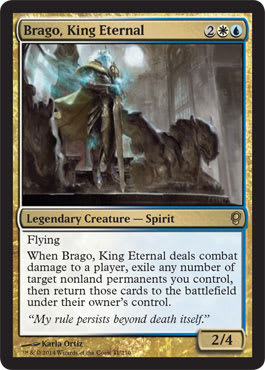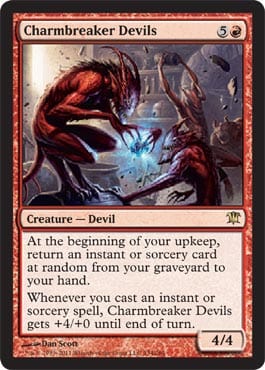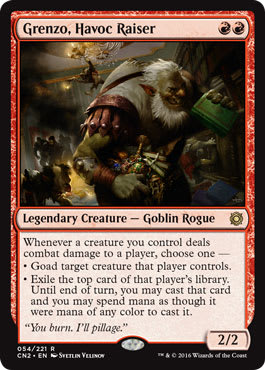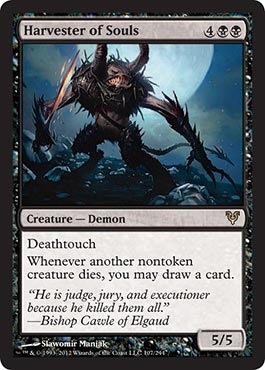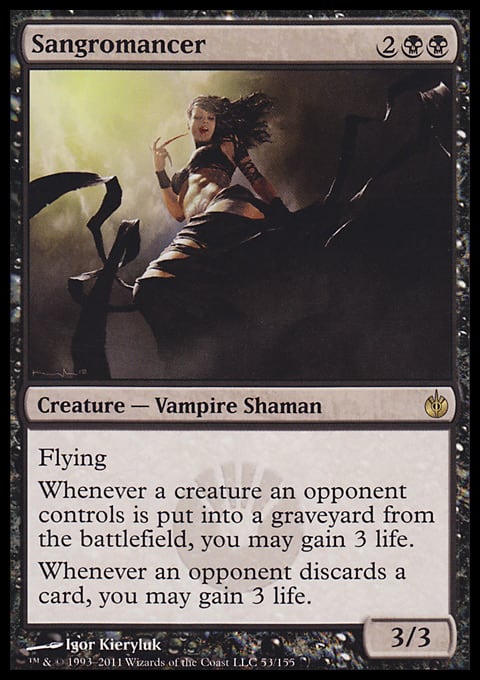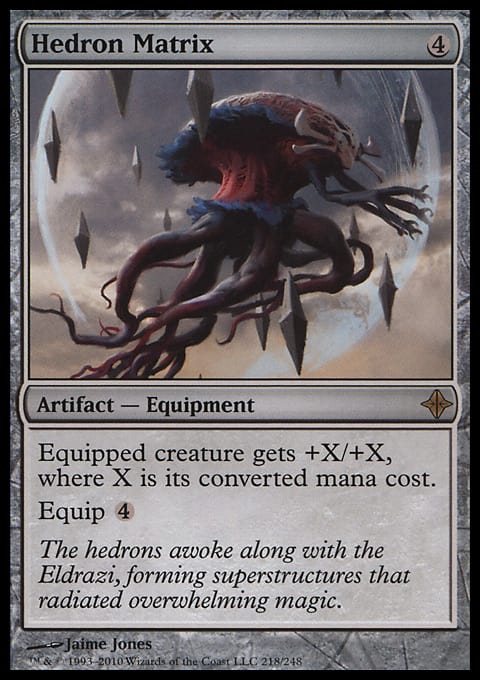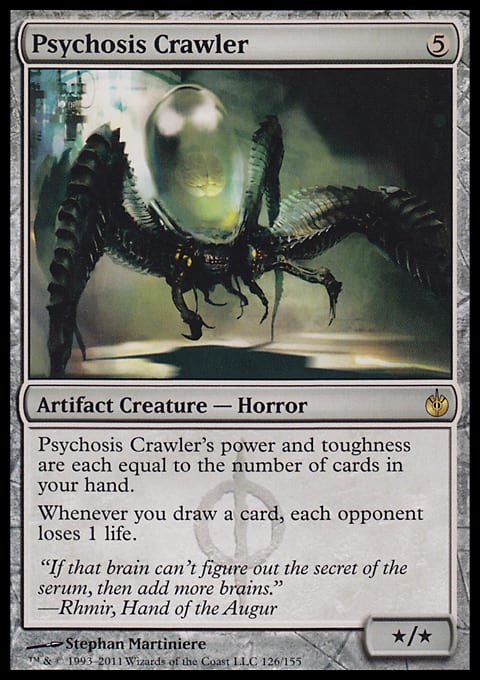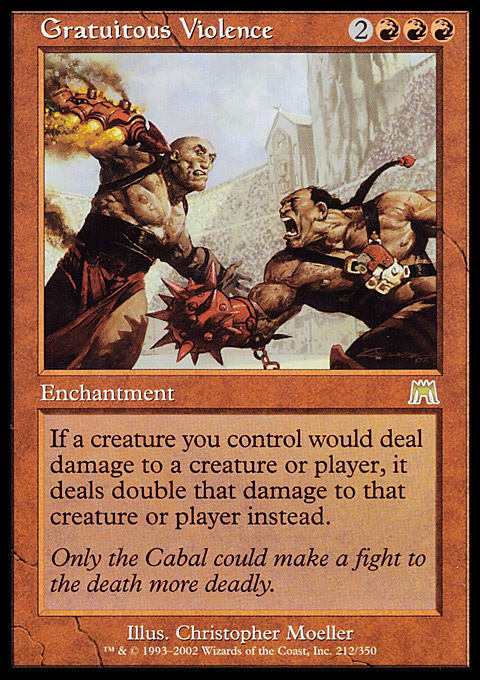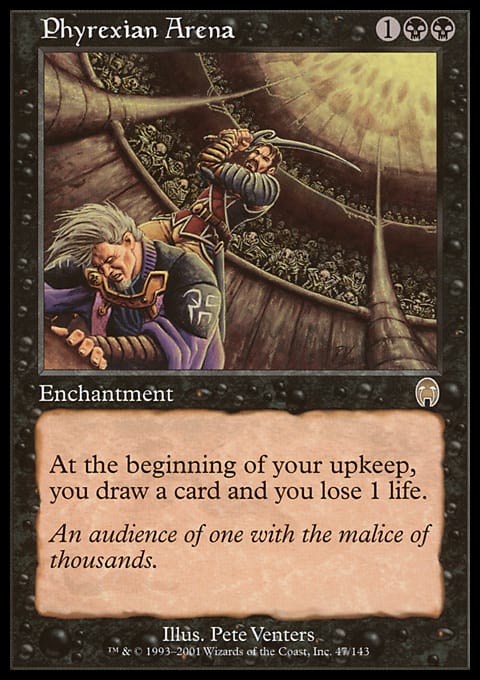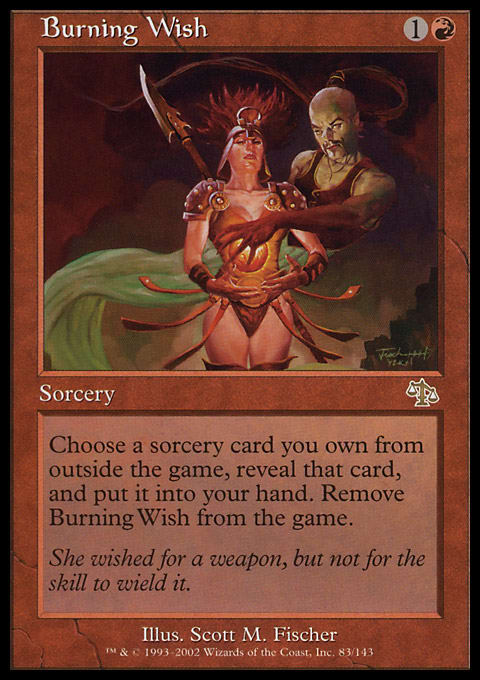While we’ve been having fun lately meddling around with the Intro Packs of Eldritch Moon — scratch that, the last Intro Packs ever to be made now that the Planeswalker Decks are on the horizon — it’s also fun sometimes to build your own Intro Pack deck from scratch. There’s certainly a precedent for creation of Preconstructed decks for sets that never had them, such as when Mirage block started to be released on Magic Online in 2005.
Theme Decks, as the precon line was known then, didn’t begin in paper form until the block after Mirage, which was Tempest Block. But when the 1996 set was digitized, it was a chance to go back and make them a quartet of decks.
Indeed, two months ago here on Gathering Magic, I devoted some column inches toward the fun exercise of making a Brago, King Eternal-based Intro Pack for the original Conspiracy set, which focused on U/W fliers. With Conspiracy: Take the Crown hitting the shelves this past weekend, it’s the perfect time to revisit that exercise and update it for the new card pool!
Especially since, you know, Brago is dead and all. No, like really dead. Once and for all dead.
So instead of a U/W deck, why not go in the completely opposite direction this time around and build something a little more Rakdos? Yup, it’s time for Black and Red to have their say!
Before we begin with our deck, let’s take a moment to look at the restrictions we’ll be operating under as we construct our 60-card build.
Rarity Structure
All Intro Pack decks have two rares, one of which is a premium rare foil card. That card is the “face” of the deck, but the other rare helps add to the fun and excitement of the deck. The premium card is typically a creature, but the second card can be nearly anything.
In addition to the two rares, we’re allowed 12 uncommons. These often provide some of the stronger support of the theme, as well as the occasional one-of that offers a splashier effect. The rest of the deck, naturally, will consist of commons and lands.
Land Content
Once upon a time we did see Intro Packs packing the standard 40% land content, or 24 lands. In the last few years, though, these have crept into the 25-26 range, presumably under the idea that mana flood is less discouraging than mana screw, and by winnowing out a land or two new players can begin to tune their deck as they see fit. Intro Packs, after all, are a sort of bridge to deck-building, letting players enjoy a deck that ‘works’ while guiding them towards improving it after they’ve played a number of games. Land content is one of the levers Wizards has at their disposal.
There are two other such levers commonly employed in Intro Pack construction we’ll want to be mindful of. First, Intro Packs rarely include a full playset of cards, even when it makes perfect sense to do so (think Galvanic Bombardment). This is normal, Wizards wants players to have that moment where they say, “you know, I really like this card, can I put more in my deck?”
The other lever is to have a wide variety of cards. This is something I call the “Duel Deck effect,” the idea that you can play five games and each is very different from one another. This is thanks to having a wide variety of cards in the deck, rather than a whole bunch of four-of’s (or rather, three-of’s), and is aimed at offering a high degree of replayability. After all, we want to show those new players what the game’s capable of, right?
With our color pairing set, let’s take a look at the rare creatures of those colors and see what jumps out at us.
Archdemon of Paliano
Once we get past the mana in the upper right of a card, there are a lot of hidden costs in the game of Magic. I say hidden not because they’re secret, but because they’re not necessarily presented as costs even though they are. For example, look at the spoiler-season favorite, Meandering Towershell. The Towershell’s inability to attack every other combat is a cost of playing the card, because you’re essentially trading a resource (attack frequency) in exchange for a substantially larger power/toughness and ability combination than you’d otherwise be able to afford for 5 mana. You wanna rock-n-roll, you gotta pay the toll, and cash ain’t always king.
This is unfortunate for our purposes, because the Archdemon is a really well-designed card that looks like a ton of fun to play with. The only problem is, the price of playing the card isn’t just 4 mana, but also the ability to select your own next three draft picks. Since we’re building an Intro Pack and skipping the draft, it simply wouldn’t be sporting to include it.
Not only that, but it would be somewhat boring, too. For all its splash, the payoff of the Archdemon is an ultra-efficient “French vanilla” creature. All of the fun is in the goofiness that comes from blind-picking in draft, so this one’s a miss.
Charmbreaker Devils
This is a fun, build-around card that rewards us for playing a large quantity of instant or sorcery cards to maximize the utility of its ability. We’ll consider this a “maybe” card, or potentially a secondary rare card, if that direction is available to us in the rest of the set. If there’s a “spells matter” subtheme we can find, that ups the Devils’ chances. The only downside for them is that they were the secondary rare card in an Intro Pack already, Innistrad’s excellent Eldritch Onslaught.
Custodi Lich
Ultimately, we’d like to have a deck that can be used in multiplayer, which is the intended format for Conspiracy, but also not lose a lot in the translation to a two-player game. Unfortunately for the Lich, the monarch mechanic probably fails that test.
The mechanic is designed to incentivize attacking your opponents, since a tendency for many multiplayer games is to turtle up and hope your opponents take care of each other for you. In a two-player duel, you have all the incentive you need to send your forces into the red zone, and introducing the crown in that setting just makes it a pass-back-and-forth tug-of-war.
Grenzo, Havoc Raiser
In contract to the Lich, Grenzo’s multiplayer ability, goad, plays just fine in a two-player setting. It’s not a perfect fit (goad really wants your opponent’s creature to attack another opponent) but it still retains enough of a Nettling Imp-like utility to make it worthwhile. You can goad over a pesky utility creature so you can take a stab at killing it, or simply goad over their best defender to clear a path to their spindown die for your beaters.
In addition, the ability to “impulse cast” an opponent’s card can lead to random moments of fun as you get to play scratch-off lottery with your opponent’s deck, making the card (and hopefully the deck) eminently replayable. As a final consideration, Commander players love their foils, so being able to have an alternate-art version of Grenzo as the face of our deck won’t so any harm to the bottom line. All in all, Grenzo’s a great package, and goes right to the top of the list.
Guul Draz Specter
The Specter isn’t a bad card, but it sure suffers from being the following act after Grenzo, doesn’t it? It’s also a more build-centric card, like the Charmbreaker Devils, in that it’s less useful in a deck that doesn’t optimize compulsory discard. Sure, it wicks away a card each time it connects with your opponent, but without ways to help that process along you give your opponent too much influence over the size of your Specter. We’ll keep looking, there are better options for a featured card.
Hamletback Goliath
Ignoring the “not-Grenzo Effect” for a moment, the Goliath isn’t a bad card to tie an Intro Pack together. It’s nice and fat on its own, and it makes even those late-Game 1-and-2-drops a little less feel-bad to draw. As a downside, it’s pricey at 7 mana, though that’s still within normal range for Wizards to consider (see: Nephalia Moondrakes in Shadows over Innistrad’s Unearthed Secrets deck).
Harvester of Souls
Like the Charmbreaker Devils, this is a face we’ve seen before. In the Harvester’s case, it was originally included in the Avacyn Restored Intro Pack, Slaughterhouse (another of the better ones). It’s a large creature with a very splashy effect, and easily makes the shortlist for our deck.
Sangromancer
Although it synergizes well with the earlier Guul Draz Specter, that tilts the deck heavily toward a particular strategy (discard) we may not have available. The Sangromancer makes a fine selection, being a midsize evasive creature with some reasonably useful special abilities.
Skyline Despot
Big, flashy dragons make great Intro Pack premium rares, but alas the Despot ties into the monarch mechanic. Maybe next time, Despot!
Volatile Chimera
Another home run design for Conspiracy, this Chimera takes on the aspect of a card you’ve exiled from your draft pool at the start of the game. Alas, since we bypass the drafting, this card is ineligible for inclusion.
That leaves us the following shortlist:
- Charmbreaker Devils
- Grenzo, Havoc Raiser
- Guul Draz Specter
- Hamletback Goliath
- Harvester of Souls
- Sangromancer
That’s a solid pool to choose from. On the other hand, we’ll also want to look at non-creature cards to consider for the deck’s second rare, to see if there’s any overlap or synergy that might be fun to build around.
Hedron Matrix
Rare equipment that gives a boost to its bearer equal to the size of its converted mana cost. Obviously, this favors large and expensive creatures moreso than smaller ones, since you’re paying the same amount of mana in either case.
Horn of Greed
Play a land, draw a card! This reprint from Stronghold has its uses, but as more of a combo card this Intro Pack doesn’t seem to be one of them.
Psychosis Crawler
There’s a glimmer of symmetry between this card and Grenzo, in that if you’re spending your mana on cards from your opponent’s library, your hand will have a tendency to fill up. That helps keep the Crawler nice and hale. It also works well alongside the Harvester of Souls, giving you an extra bonus for taking out your opponent’s creatures. Notably, the Crawler was the premium rare in Mirrodin Besieged’s Doom Inevitable Intro Pack.
Gratuitous Violence
Turning to enchantments, being able to give all of your creatures double damage is a very strong ability, but it’s high Red component makes this a lot less attractive. A pity it didn’t give double strike instead, which would go very well with Grenzo’s ability.
Phyrexian Arena
Here’s a card that would pair quite well with the Psychosis Crawler, but that’s not the direction we’re looking to go. Still, it also pairs well with some of our other options. More card drawing means more potential utility from the Charmbreaker Devils, as we’ll see more of our instants and sorceries. It also means more fuel for the Hamletback Goliath, since we’ll be seeing more creatures.
Burning Wish
Moving on to sorceries (there are no rare instants to consider), we find Burning Wish. This is an exciting card, but not a great one for an introductory product whose owner might not have a very good use for the card.
Capital Punishment
The council’s dilemma mechanic is a little clunky in a two-player duel, but it’s still workable. The problem here is one of power level. If it’s just you or your opponent, they’re either sacrificing two creatures, discarding two cards, or doing one of each. At 6 mana, that’s not the most attractive range of options (though a case could be made for a double-Edict). Still, this does pair well with the Harvester of Souls, Sangromancer, and Guul Draz Specter.
Inquisition of Kozilek
Single-card discard effects aren’t typically used in these sorts of decks. Although it would be an attractive card to include for the purposes of shifting units of product, it’s not a great inclusion here.
So there you have it! Which two rares would you pick to build around? We’ll be back next week to make our own selection, then build a deck to suit. See you then!
















